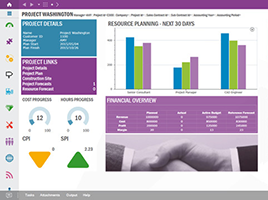Momentum is growing in the adoption of modern enterprise resource planning systems (ERP), like SAP S/4 Hana and cloud-based deployments, especially Hana Enterprise Cloud (HEC). Analysts predict cloud ERP deployments will become the default within the next two years, and traditional ERP software will be phased out.
In fact, by 2025, SAP will end mainstream maintenance of its legacy ERP Central Component (ECC) software.

At the same time, governments are increasing their efforts to reform financial processes. Numerous countries are at various stages of asking companies to comply with detailed processes for e-invoicing, accounting and tax reporting. These government mandates are forcing businesses to further accelerate digital transformations, from purchasing to a general ledger.
Countries throughout Latin America have been leading the way, starting with automated tax reporting and evolving to more complex rules involving e-invoicing that must be validated in real-time (Brazil), e-assessments (Chile) and e-receipts (Peru). After watching these countries close their value-added tax (VAT) gaps, European nations are following Latin America’s lead.
Spain now requires real-time visibility into business data. Therefore, companies have to adopt new technologies and dramatically change common practices. Hungary is tracking B2C and B2B transactions in real-time, with no human or manual intervention allowed. Italy went a step further, adopting a clearance model that requires e-invoices in the mandated format to be cleared through the government platform before goods can ship.
Tax Compliance Gaps
Constantly changing requirements are an accepted part of the corporate regulatory environment. S/4 Hana and ECC both address compliance requirements by providing country-by-country tools to build custom workflows.
However, these efforts add cost and complexity to SAP centers of excellence (COEs). In addition, compliance updates are handled through complex standardized code releases, forcing companies to adapt the code to their individual customizations.
Many enterprises have global strategies to roll out SAP updates on a set schedule. This approach could cause them to fall behind in compliance. The major updates and testing required for e-invoicing and all forms of continuous tax compliance interrupt the COE’s calendar and can affect global operations.
Companies that run an N-1 upgrade strategy are especially at risk, as their compliance measures won’t be up-to-date with new requirements. Nor does SAP account for local-level details, like certain fields, naming architectures, codes or character limits. These factors can result in implementation challenges and compliance gaps.
In order to continue normal operations and avoid compliance cost increases, leading businesses are faced with a growing need to address VAT enforcement down to the transaction level, in real-time for every type of transaction.
In Italy, for example, customer invoice acceptances or rejections do not need to be registered with the Italian invoice clearance platform, and the use of the SDI system for export and outbound intra-community invoices is currently optional.
However, these processes are expected to become mandatory. Whether in Italy or other European countries adopting e-invoicing, companies will need to prepare all their business applications – from ERP to cloud-based transaction services – for what’s to come.
ERP-Centric Tax Compliance Administration
Tax compliance must be proactively managed within S/4 Hana to address regulatory changes and avoid the risks, fines and penalties that occur from data discrepancies, errors and non-compliance.
However, internal management of this process is no easy feat. It requires changes to the way global COE and shared service teams operate. Furthermore, it involves time-intensive IT projects, since frequent updates are needed not only for ERP and billing system, but also for other customer transaction and purchasing systems.
When initiating a S/4 Hana project, companies must put tax compliance at the forefront to ensure they can manage the complexities of global tax laws. When evaluating solutions, companies should look for functionalities such as:
- Continuous updates that prepare companies in advance of regulations.
- Data visibility for a central source of truth to ensure understanding of all tax liability and avoid errors and unnecessary data manipulation across a patchwork of systems.
- Automation to reduce manual entry and ensure accuracy while meeting deadlines across geographies and compliance obligations.
- Seamless workflows that remove IT involvement and enhance operational efficiency across the company.
- Flexible APIs to make compliance solutions available in financial systems and workflows, and which facilitate real-time and periodic communication to governments in the unique and changing data formats they require.
- Reporting and analytics to enable tax teams to quickly identify and reconcile tax transactions with the general ledger and spot trends, discrepancies or flows in transactions that reveal consistent errors.
By ensuring new solutions offer these functionalities, companies can address the challenges associated with SAP-native implementations and maintain the highest level of compliance despite frequent regulatory changes.







